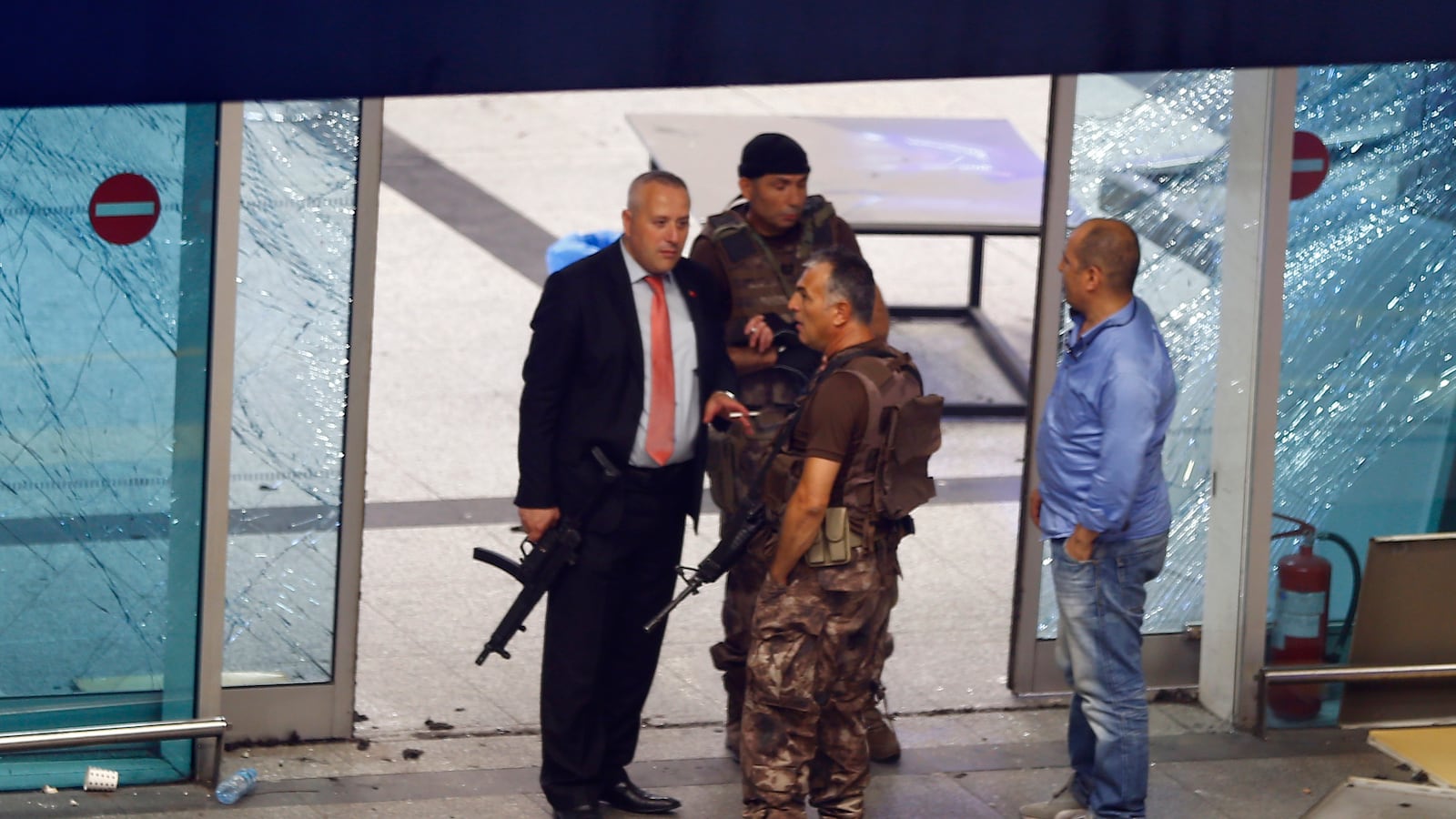Three months after attacking Brussels airport, terrorists have shown in the attack on Istanbul’s international airport an alarming ability to stay one move ahead of the defenses put in place to stop them—an agility in planning that could present a new and serious threat to airports in the U.S.
Most experts agree that the Istanbul atrocity has the hallmarks of ISIS. Even then, the sophistication of how the attack was carried out has surprised them.
It was carried out in a way that suggests the kind of advance intelligence, careful study of a target, and cool execution that would normally be practised by Western special forces.

There were three phases. It began with an attack in a car park adjacent to the international arrivals terminal. The purpose was to draw security staff away from the terminal.
The attackers obviously knew that security at the terminal itself had recently been hardened, as a response to the Brussels attack, where the bombers had exploited the fact that, as in many airports, there was no security threshold before the check-in desks.
In Istanbul anyone entering the arrivals terminal faced screening and checks at the doors. The car park diversion achieved its aim of drawing police and security staff from the building’s first line of defense—and left vulnerable scores of people at the taxi and drop-off area waiting to go through security.
This was where the second attack was carried out, causing most of the casualties: 41 dead, more than 200 injured. The blast effect of this attack breached the doors and security cordon, allowing a third attacker to get inside the building. As seen in a chilling video from a security camera this attacker, wearing a suicide belt, was tackled by a guard who forced him to the floor. From the video it seems that the guard died while trying to prevent the attacker from detonating the suicide belt—an act of supreme bravery.
Even though the Turks moved the security perimeter outward to reinforce what is called landside defenses (as opposed to airside, where the gates and airplanes are), the body advising European airports, Airports Council International (ACI) Europe, was amazingly complacent after the Brussels attack.
They said, “The possible adoption of additional security measures such as checks on persons and goods entering airport landside spaces could be disruptive and actually create new security vulnerabilities.” They added that it would amount to “moving the target” rather than securing it. They also said—revealing their deepest concern—that such changes would cost money.
In Europe (excepting Germany) the airport authorities have to fund their own security. In the U.S., of course, the Transport Security Administration (TSA) is responsible for all airport security as part of Homeland Security.
And it is here, in the U.S., where there must be renewed concerns about the vulnerability of the arrivals and departure areas of airports. Although there are invisible protections like closely monitored surveillance cameras and some random visible protections like armed security guards and sniffer dogs, the first line of defense remains beyond the check-in counters, not ahead of them.
Airside security at U.S. airports has also been found wanting. For years there have been worrying breaches including a notorious case where guns were smuggled from Atlanta to New York by a criminal ring and where the screening of personnel with access to baggage and airplanes has been found to be lax.
And hardening the perimeter on the landside raises the question of how far outward it can go. If attackers are to be intercepted successfully before reaching the terminal buildings that means new checkpoints and screening on access roads that would, in turn, create the kind of bottlenecks that make tempting targets.
It may always be true that once terrorists get to an airport it is already too late to stop an attack, even if it can be disrupted. The most effective last line of defense is intelligence that identifies and thwarts an attack before it can be executed.
Commercial aviation remains the most effective target for ISIS. This year it seems that their attention has turned more and more to attacking airports as an easier option than airplanes. This produces huge short-term results in publicity and terror and serious long-term economic damage to tourism and to freedom of movement. Istanbul shows that whatever the defeats of ISIS on the battlefield in Iraq and Syria it remains devoted to finding soft targets in the West wherever they are detected.






